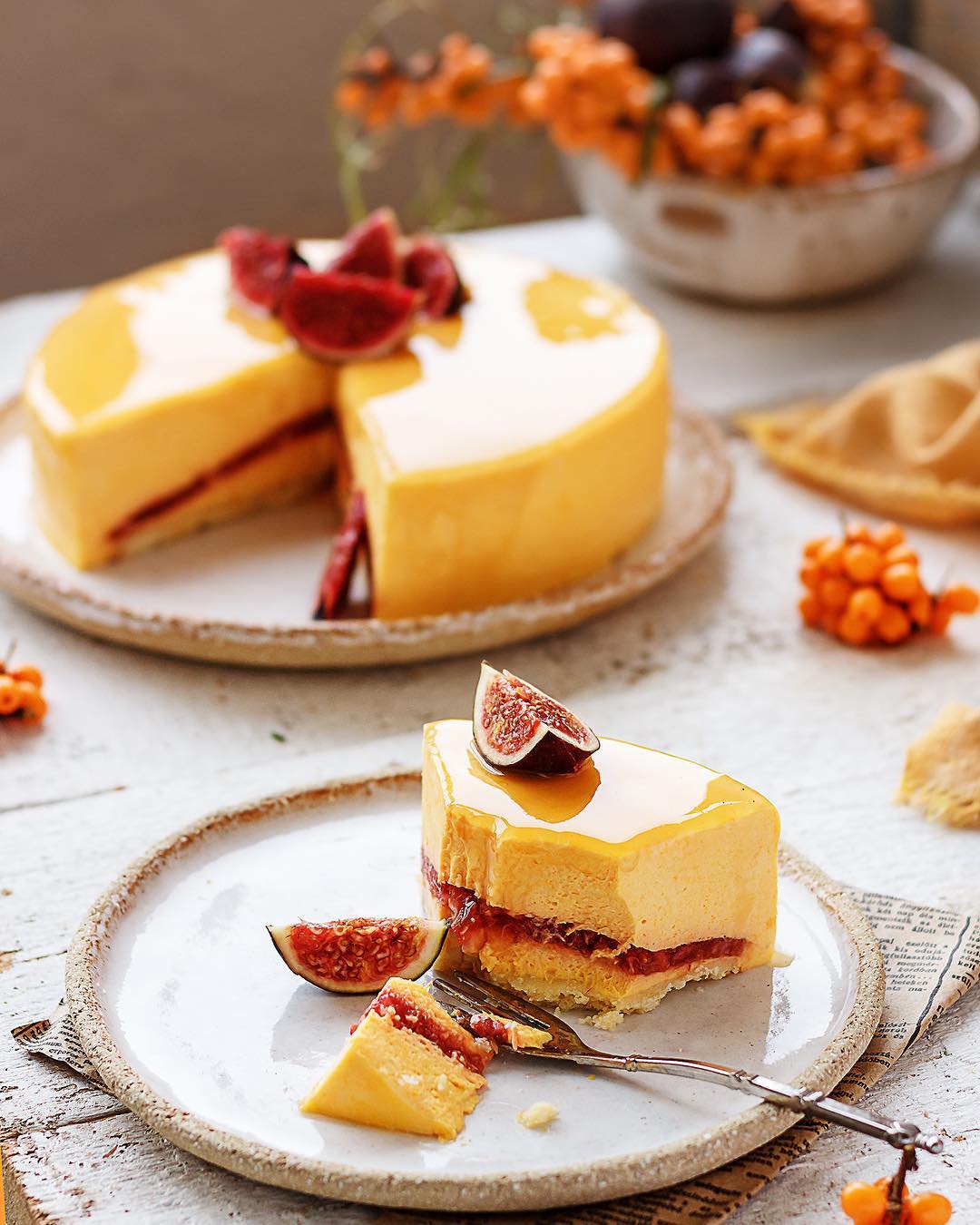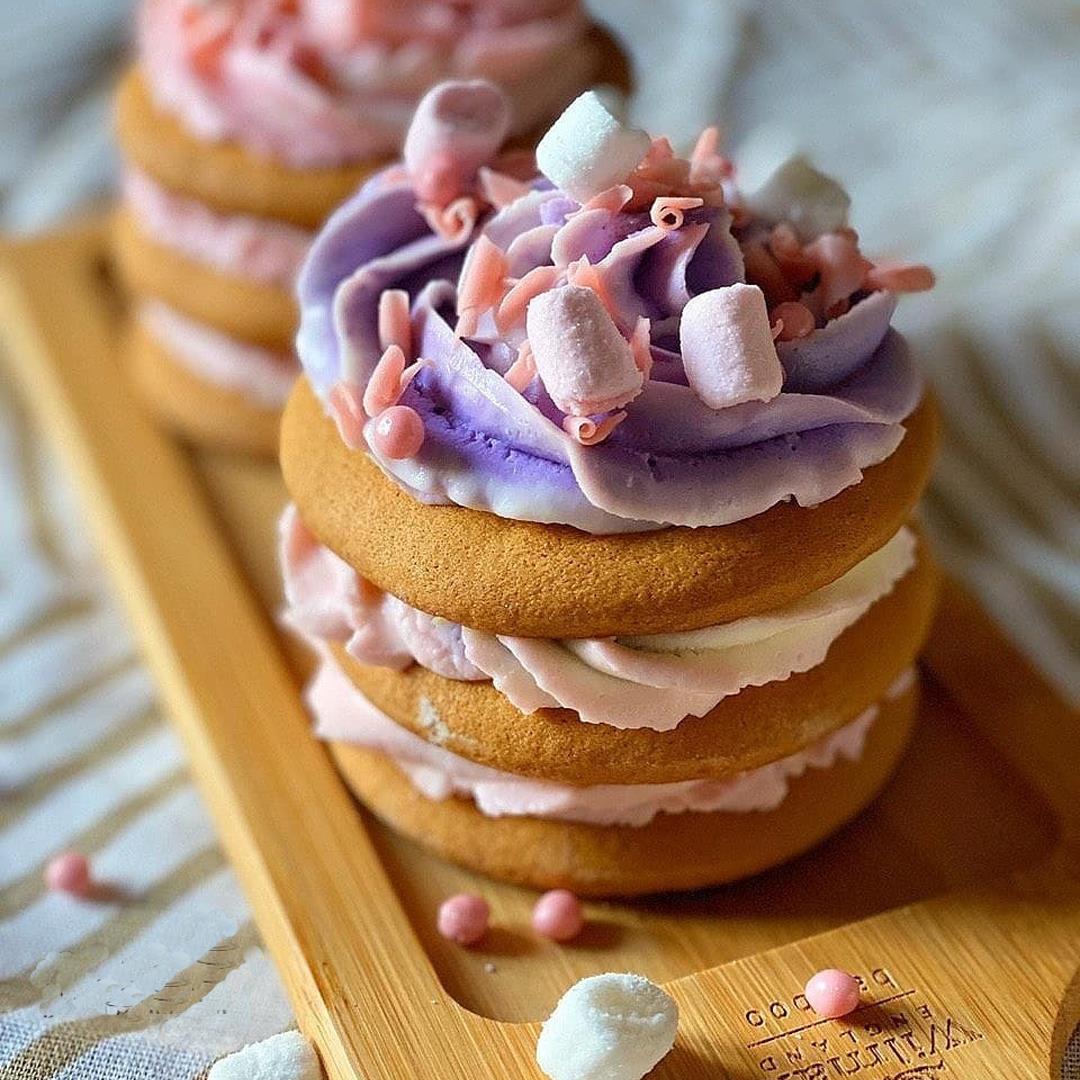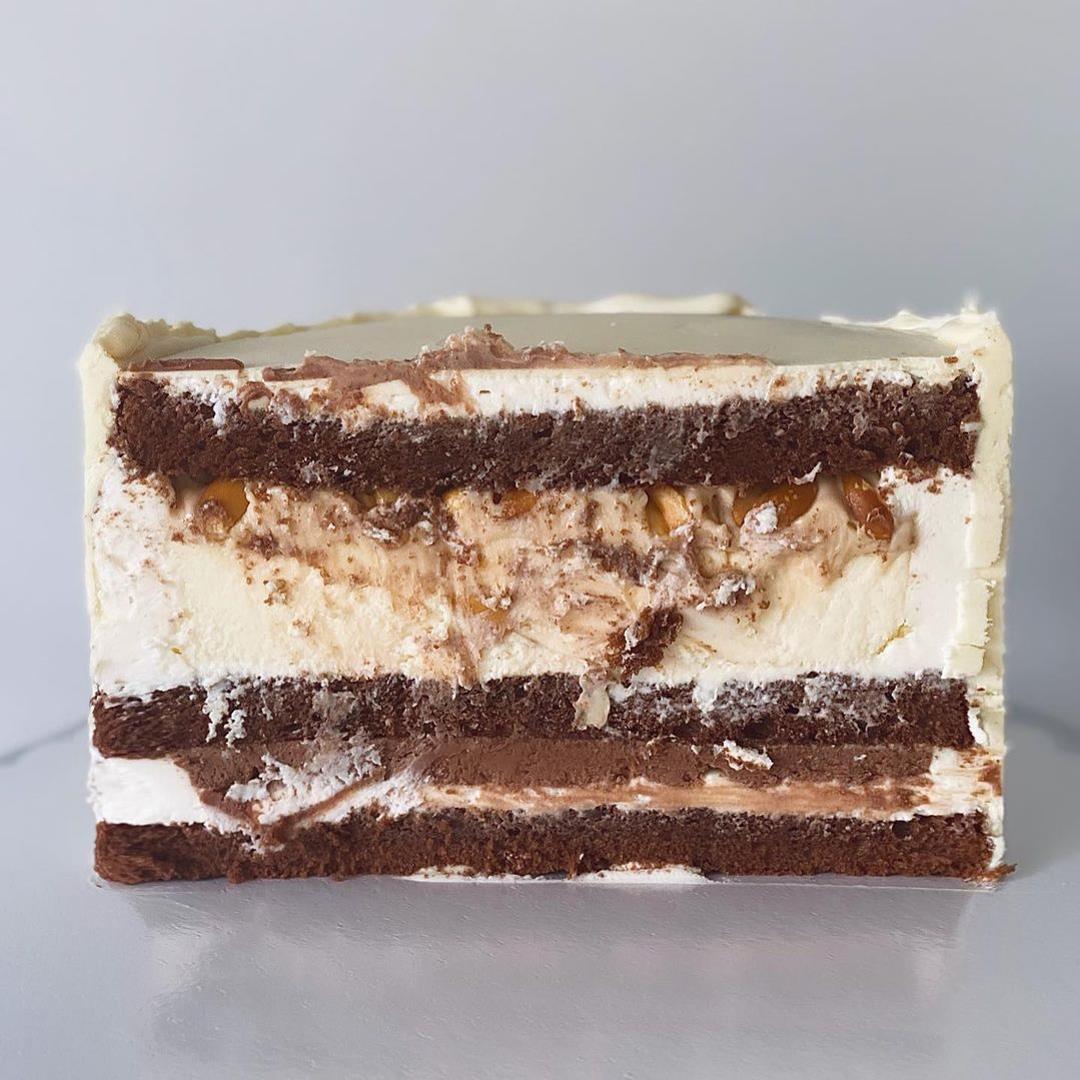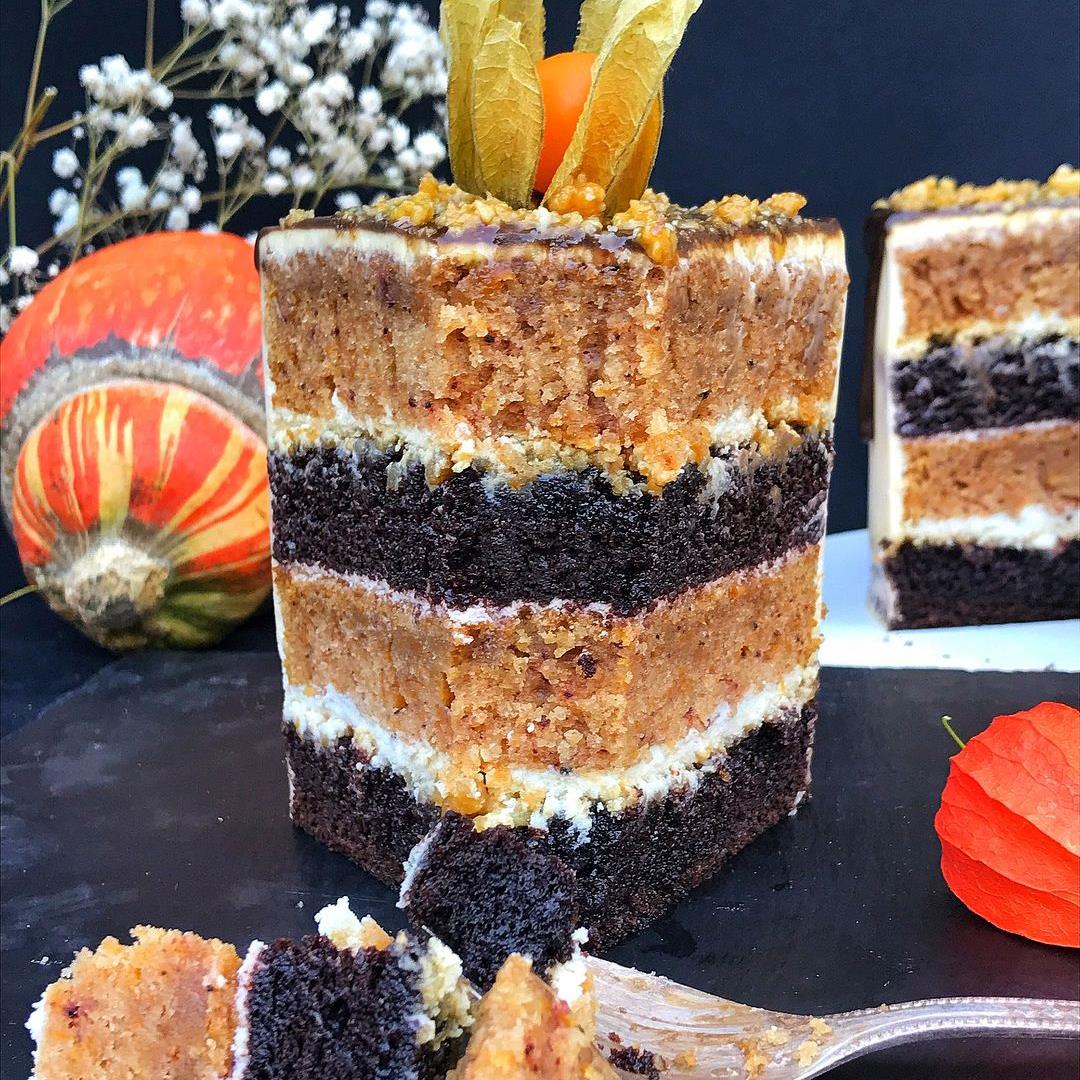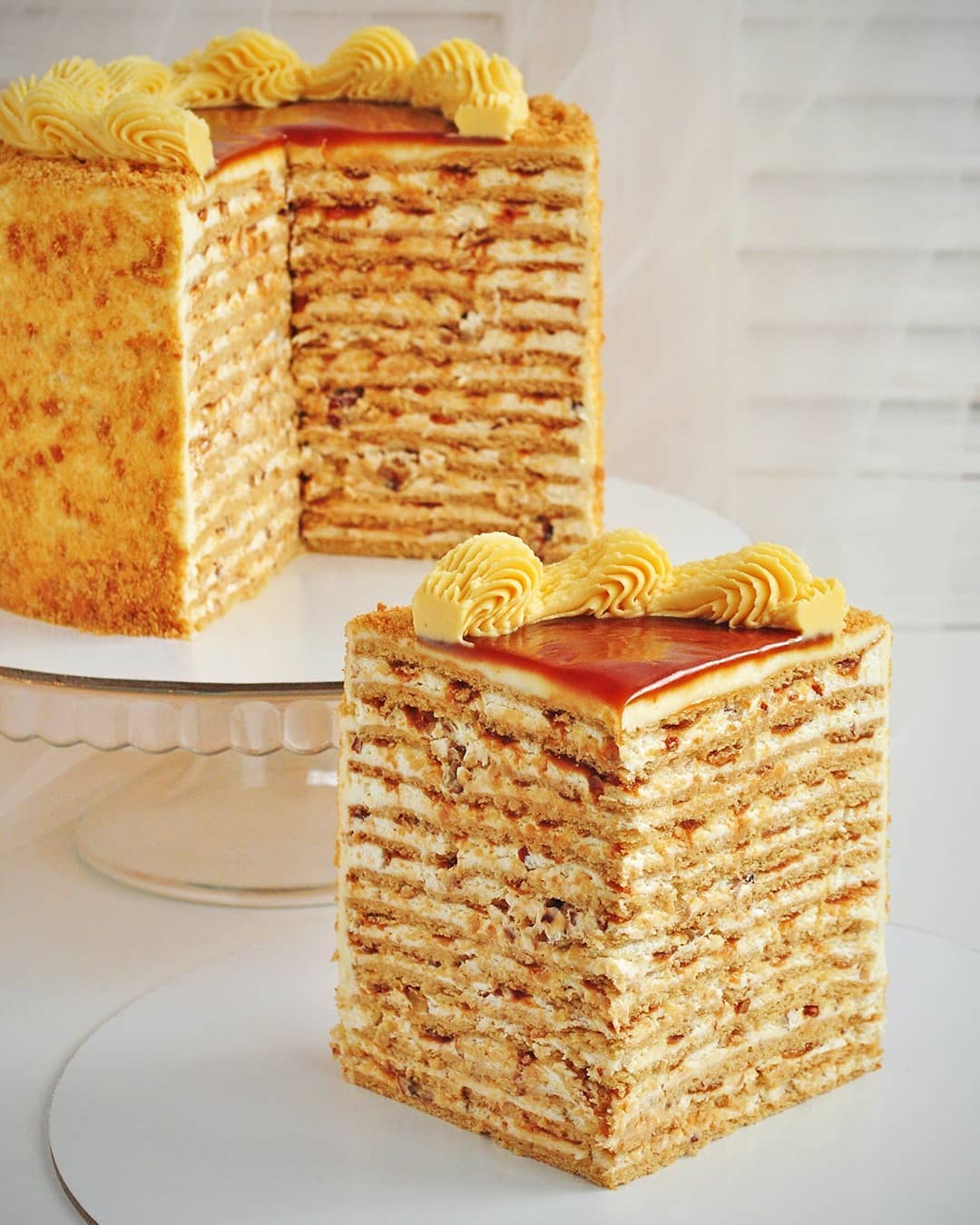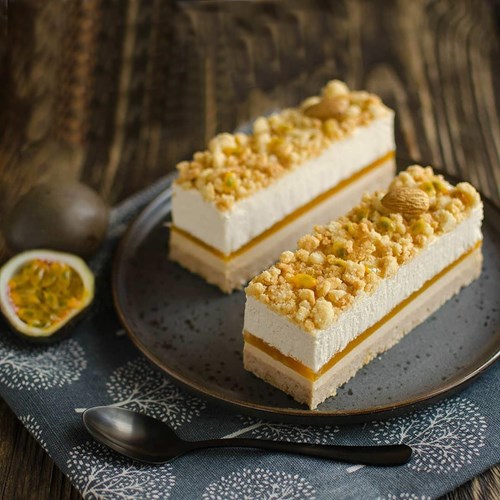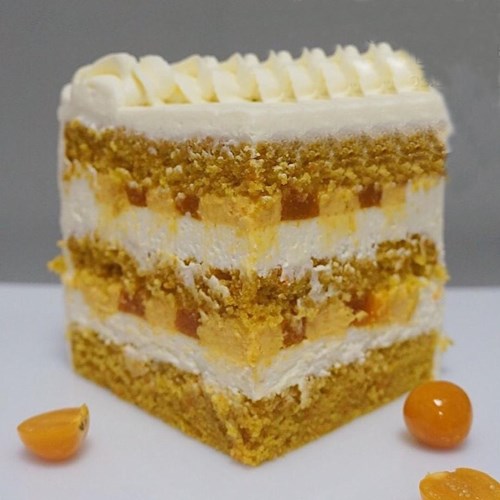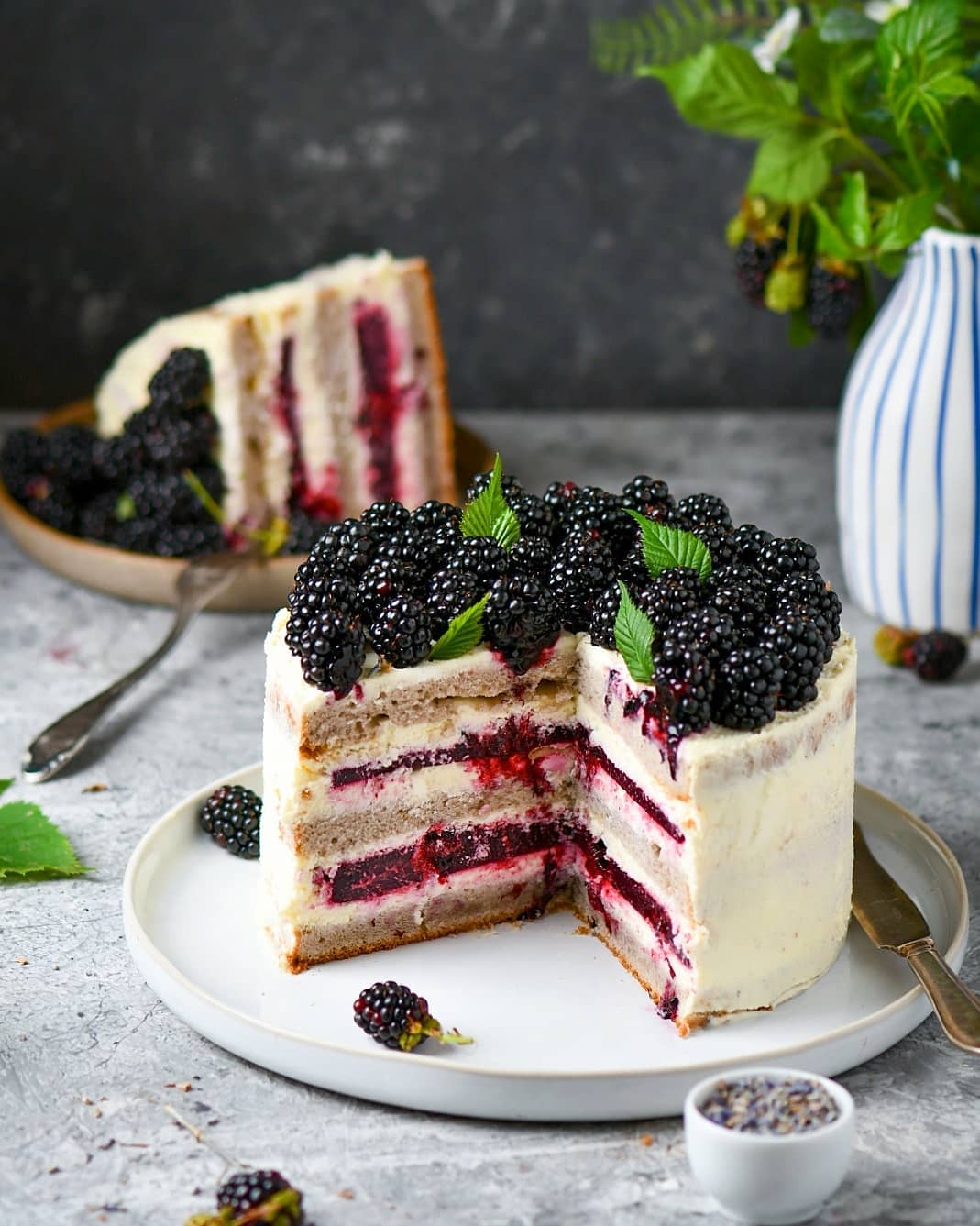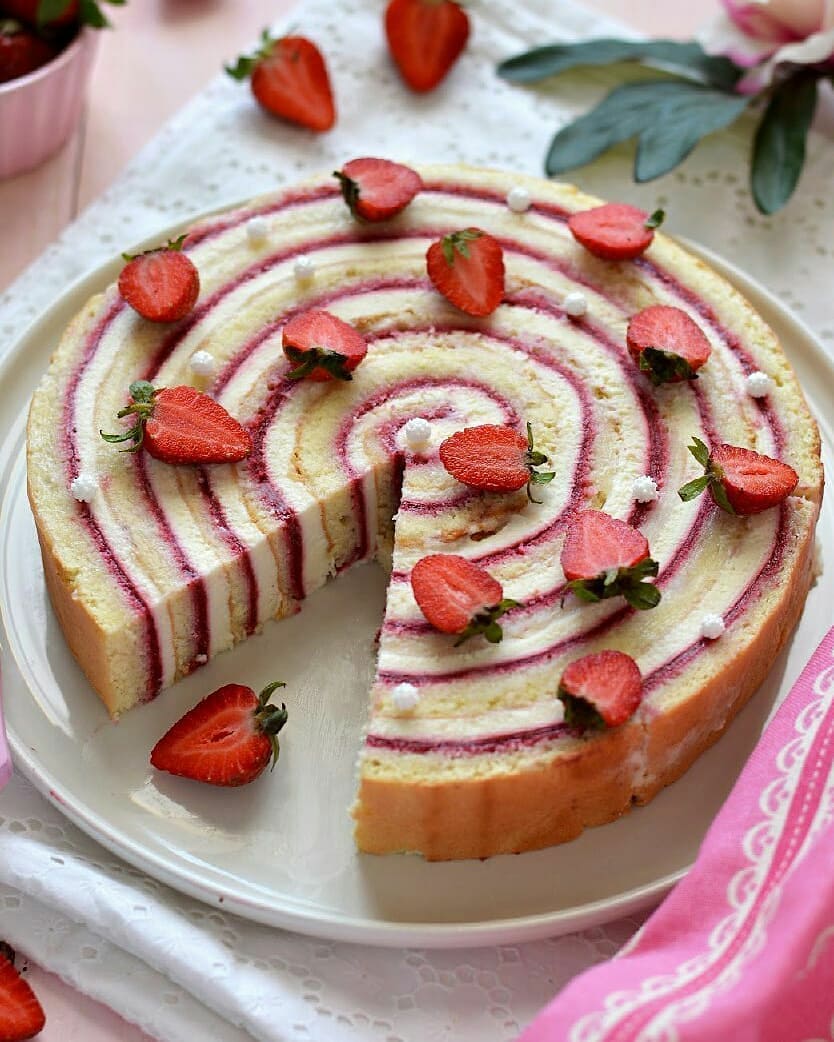Ingredients
Dacquoise Biscuit
Fig Compote
Sea Buckthorn Mousse
Neutral Glaze
Instructions
Step 1
Step 2
Step 3
Step 4
Step 5
Servings
Equipment
Make sure to get sturdy ring molds, as these will help create clean layers and a beautiful finish. Wrapping the bottom with cling film can prevent leakage.
Using a silicone mat ensures even baking and easy removal of the biscuit. They are also reusable, making them an eco-friendly choice.
You'll need multiple mixing bowls for the various components of the cake. Using a sturdy silicon whisk can make blending easier and more efficient.
An electric mixer will save you time and effort when whipping egg whites and cream to the perfect consistency.
Variations
**Ingredients Update:**
- Swap out wheat flour in the Dacquoise biscuit with almond flour or a gluten-free flour blend.
- Follow the same steps for preparation, ensuring the use of gluten-free ingredients.
**Ingredients Update:**
- Replace egg whites with aquafaba (liquid from canned chickpeas).
- Use agar-agar instead of gelatin.
- Swap cream with coconut cream.
- When whipping aquafaba, ensure it forms stiff peaks just like egg whites.
- Heat agar-agar with a bit of water to activate it before adding to compote or mousse.
Faq
- How do I prevent my egg whites from deflating?
Make sure your mixing bowl and whisk are completely clean and free of any grease. Adding a pinch of cream of tartar can also help stabilize the egg whites.
- Can I use frozen figs instead of fresh ones?
Yes, frozen figs can be used. Just make sure to thaw them completely and drain any excess liquid before use.
- How do I know when the sugar syrup is at the right stage?
Boil the sugar and water mixture until it reaches the “soft ball” stage, which is about 115-118°C (239-244°F), or until a thin thread forms when the syrup is dropped into cold water.
- Why does my mousse separate sometimes?
This could be due to the ingredients having different temperatures when combined. Ensure all components are at similar, cool temperatures when mixing.
- Can the mousse cake be made in advance?
Absolutely! The mousse cake can be made and frozen up to a week in advance. Just glaze and decorate it on the day you plan to serve.
- What's the best way to cut clean slices?
Use a sharp knife dipped in hot water to cut through the cake. This will give you clean, smooth slices without smudging the layers.

